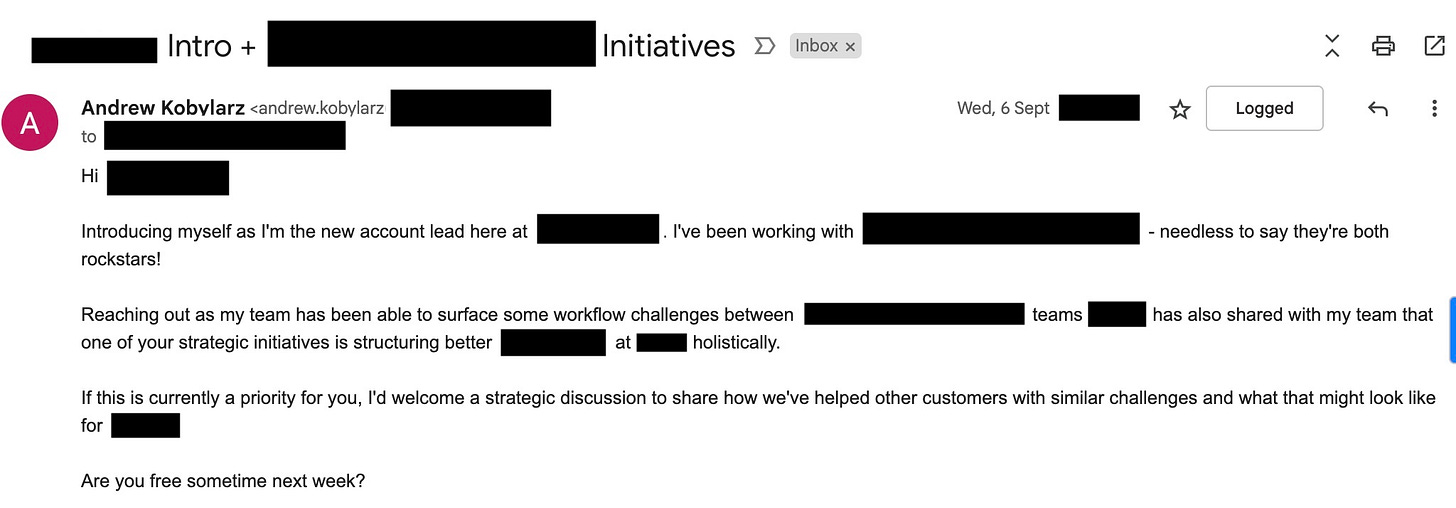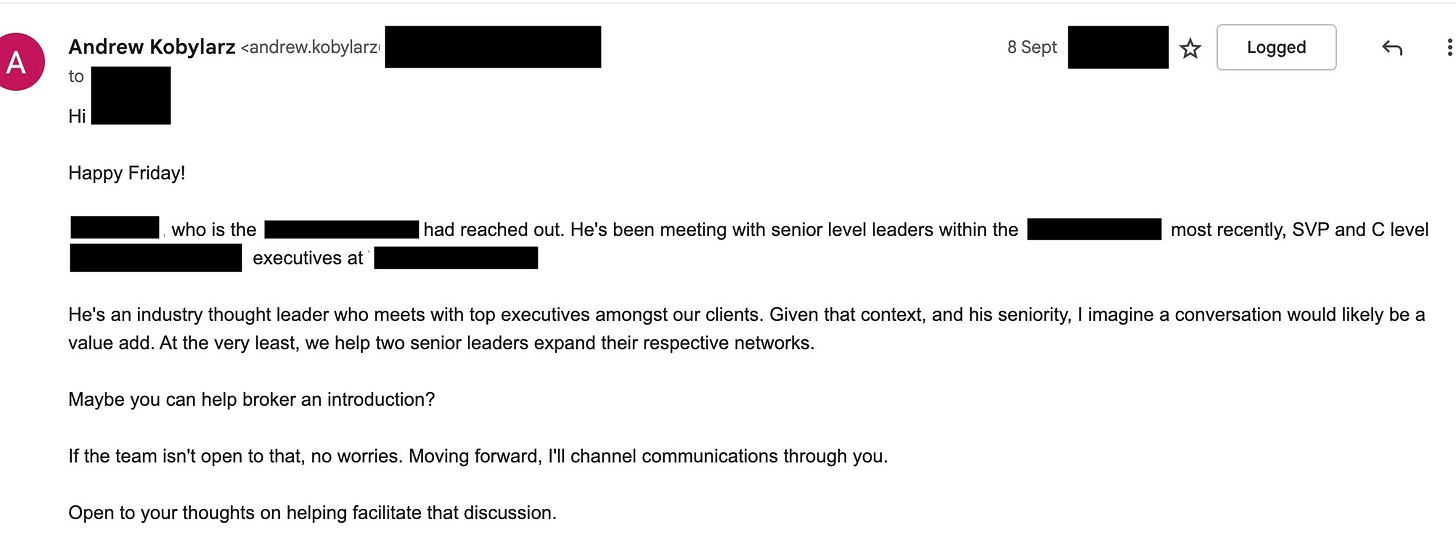3 Rules for Pleasant Persistence: Part II
Real World Breakdown: Managing Friction
A quick thank you to everyone for subscribing and reading: Hacking SaaS Sales has officially crossed 1k+ subscribers!
Last week we answered the question:
When is aggressive, too aggressive?
You can check out part I here. Generally speaking, there are 3 rules of thumb to follow:
1. context is key: have a solid "why"/ POV
2. who/what do you know: sharing information and connecting dots is useful, not intrusive
3. who have you helped? solving similar problems for other clients equals credibility
Today we’re going to walk through a real world example and breakdown how to manage friction if you come up against it.
Real World Breakdown: Managing Friction
For context of this scenario - I had an existing account in my book. Goal is to expand to other departments. Given the size of the account, I felt I had A LOT of room for growth.
I had been told to stop reaching out to C-suite executives within an account, despite I using what I had learned from bottom up conversations. In addition, leveraged my executive team.
In retrospect, I’m not even sure that this was the best approach. However, I used what I knew and most importantly, took action. In reality I had nothing to lose and it ended up being a positive outcome.
Today we’ll cover:
Initial Contact to Executive
Pushback
Managing Friction
Outcome
A few things to note when you take this approach:
Kill with Kindness: On the off chance your note get’s forwarded, you’re complimenting your main contact.
Cite why: using internal org information you know (see rule 2)
If you don’t have that: keep the communication to a “line-in” and provide visibility or progress on how your solution is helping with an initiative so far (multi-threading 101).
Otherwise - find a good reason to reach out
Initial Contact to Executive
This is my first note over to a C level contact within one of my accounts. Since my primary contact wasn’t moving the needle to expand, my instinct was to be proactive. Based on discussions with primary contact, I “thought” I uncovered a challenge that was on this executive’s radar.
This was my “why”, see rule 2, for reaching out.
Important: provide context for what your solution does - mistake on my part.
There’s some more things I can critique on this note but it goes to show, taking action is rule #1. This could have just as easily gotten me a meeting, in this instance it didn’t.
At the end of the day, sales is a numbers game and sometimes, it’s just right place, right time.
In lockstep, my SVP had reached out with a note that I had ghostwritten with the context I had learned. The added bonus was that my SVP was going to be in the area. My logic: leverage that for an in person.
From there, I received a note from another contact on this account’s team.
Stop Reaching Out
Not the end of the world.
In fact, this was probably one of the nicer emails I’ve received from contacts to back off when reaching out. If you want to see some funny examples where I’ve messed up and prospects have gotten pissed, you check them out here.
Managing Friction
***Intentionally left out certain parts to ensure nothing sensitive is being shown since I’m not anonymous.
A few things on this note:
I cited who the other “person” was that was reaching out - my SVP (status)
I also noted that he’d be meeting with other F500/upmarket accounts in the area (social proof)
Provided a worst case scenario - two execs that can expand their network (credibility)
Asked for this contact’s help - with a bow out if the answer was “no” (vulnerability)
Now, was this the best response? Maybe, maybe not. After rereading this, I could have also restated the context as to the reason for reaching out, which was a missed opportunity.
However, this is an example of “aggression” with tact. Still pushing to move forward, in a respectful way.
The response?
Not bad!
We ended up getting into a POC with another division within the account. It ended up NOT being a sale. Which sucks, but at the same time okay. As stated above, this could just have easily gone the other way but I would have never have known without pushing a little further.
Next week - I’ll breakdown how I’d approach a similar scenario with a refined POV to increase the odds of success.
As always, thanks for reading and see you all next week. If you have any questions or thoughts, shoot me a DM or email andrew@hackingsales.xyz.
-Andrew K
PS - if you liked this article, feel free to give a “like”, “comment”, or “share” with your network





